2002 North Main Street
Santa Ana, California 92706
TEL: 714.567.3600
The Social Beadwork: The Use of Beads in Sub-Saharan Africa
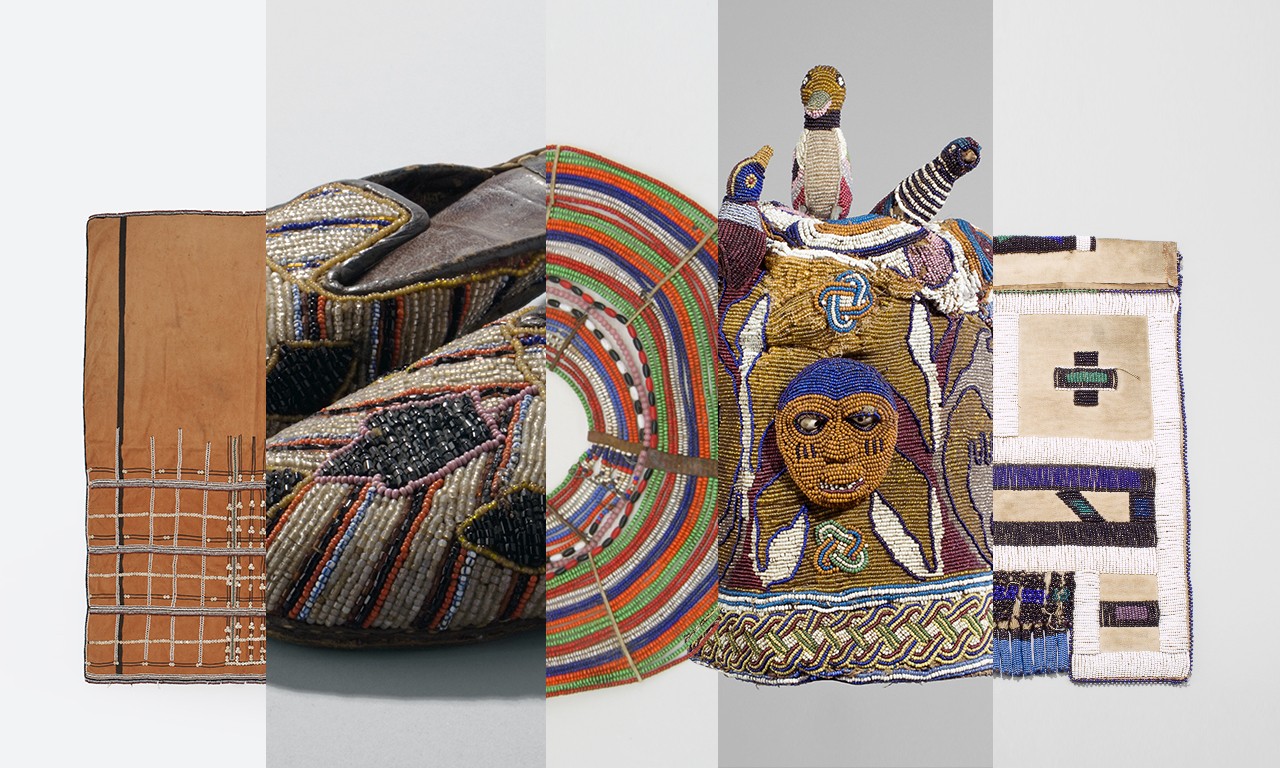 |
| Composite of African beaded art 2016.15.32, 2002.45.5a,b, 93.59.14, F74.12.10, 99.76.112 Gifts of Diane Wedner and Ronald Ziskin, and Anonymous; Bowers Museum Foundation Acquisition Fund Purchase |
Exciting Things to Come
This past weekend marked the close of the Bowers’ Guo Pei: Art of Couture exhibition and the start of a period of preparation for our two summer exhibitions—Ubuhle Women: Beadwork and the Art of Independence and the California Art Club’s 112th Annual Gold Medal Exhibition. In anticipation of the first show, one which highlights the beadwork of an all-female artist collective from South Africa, the Bowers Blog surveys beaded art from throughout the continent before looking at pieces from the same Zulu and Xhosa beading tradition in which some Ubuhle artists were raised.
Legacy of Trade
Both beads and the practice of beading within Africa have ancient origins. The oldest dated beads globally were made about 72,000 years ago from shell, bones, and other natural materials. Jumping ahead about 71 millennia, beads made in the Middle East and Southern Asia first started appearing in South Africa by around the 7th century of the common era, brought by Arab and Swahili traders. As major bead-making centers were created in Europe, trade beads began to come to Africa by way of Portuguese and Dutch traders. Since the 16th century, there has been a steady trade of glass beads from Europe, with most today now being imported from countries like the Czech Republic.
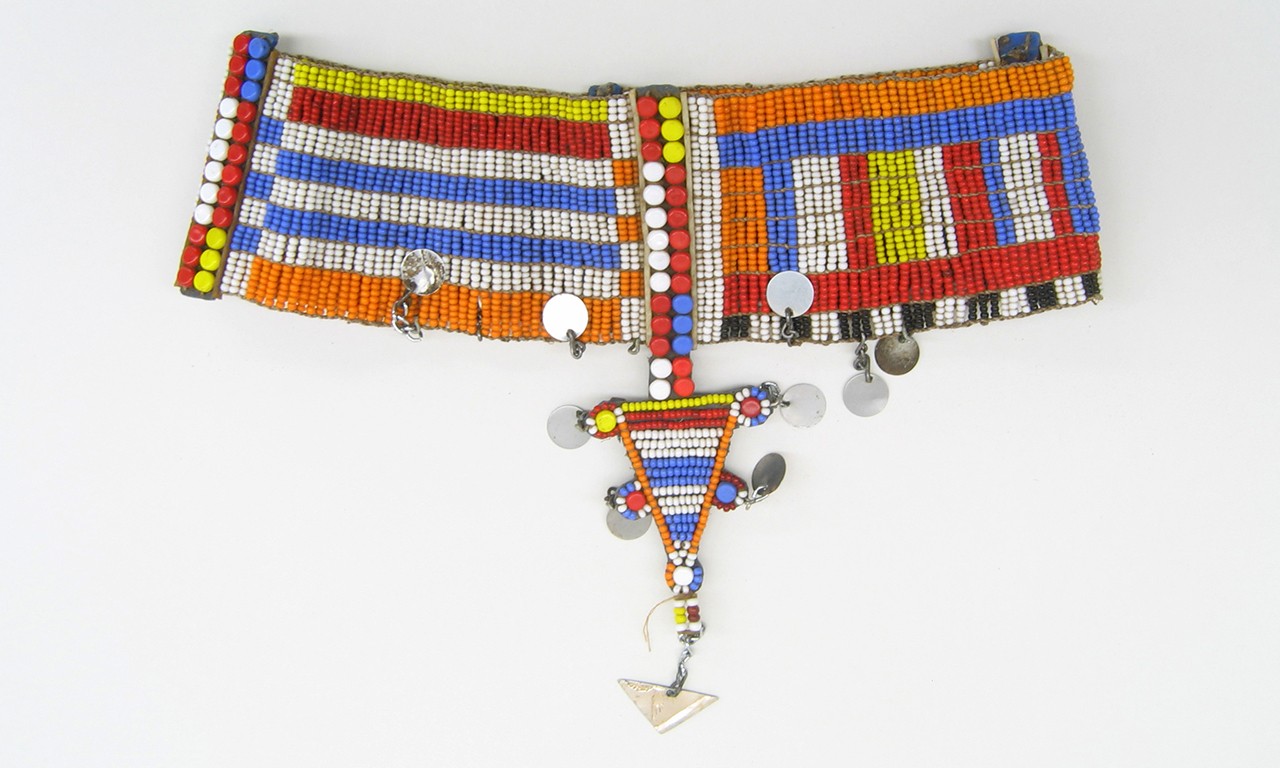 |
| Collar, 20th Century Maasai culture; Tanzania Beads, leather, wire, metal, and fiber; 8 1/2 x 5 3/4 in. 93.59.8 Bowers Museum Collection |
Maasai Motifs
For many cultures, such as the Maasai of Tanzania, beadwork is used to adorn objects that indicate one’s status and tribal identity. Maasai women wear different kinds of beaded neck rings depending on whether they are young women, of a marriageable age, or married. The same largely holds true for boys and men, whose rank can be determined from their jewelry. Though the above collar has not had its subgroup identified, it would likely have been worn by a man based on the arrow-shaped adornment having traditionally represented warriorhood. Different Maasai subgroups use different color combinations and patterns to distinguish their jewelry from one another.
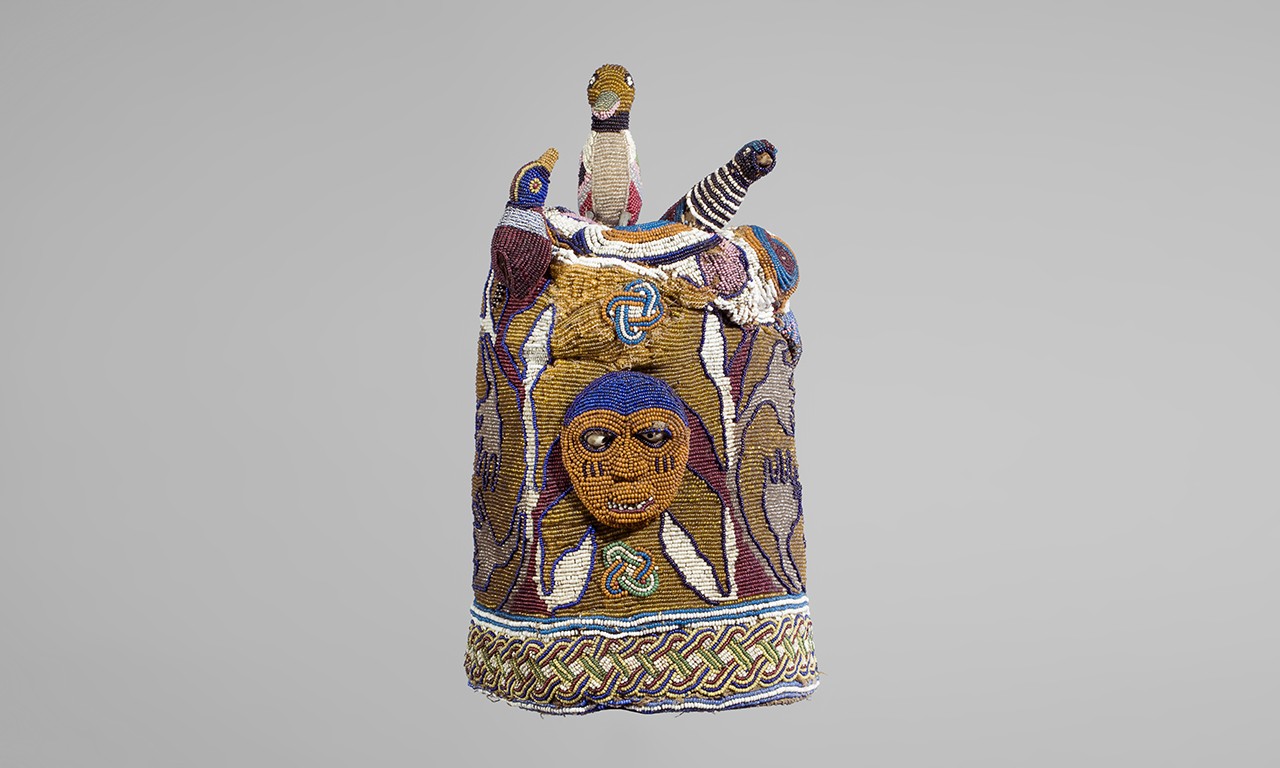 |
| Chief's Crown, 20th Century Yoruba culture; Nigeria Fabric, gold, shell and bead; 11 1/2 x 7 in. F74.12.10 Bowers Museum Foundation Acquisition Fund Purchase |
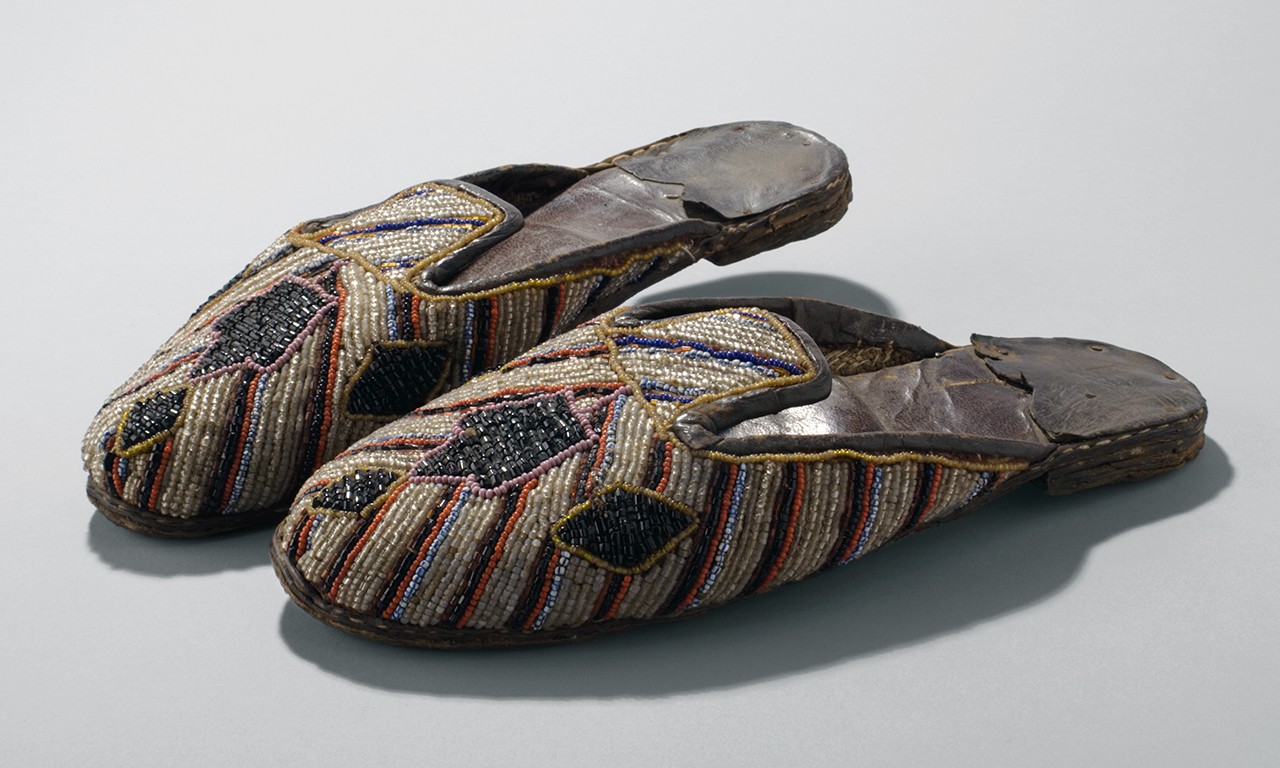 |
| Chief’s Shoes, early 20th Century Yoruba culture; Nigeria Leather and beads; 10 3/4 x 4 1/8 x 2 3/8 in. 2002.45.5a,b Gift of Diane Wedner and Ronald Ziskin |
Decreed by Bead
In western and central African cultures, the ruling class tended to control the application and wear of beadwork. The two objects above, a beaded crown and pair of shoes, would have been made for a chief. The crown in particular consists of angled strands of multicolored European trade beads stitched over a frame of wickerwork and cloth. The motifs—a human face, three birds rendered in the round, a knot, and the abstracted forms of plants or serpents—are far from ornamental, the birds symbolize a divine force bestowed to the king in part by a council of female elders called áshe. According to Yoruba legend, Oduduwa, the creator and first ruler of all Yorubaland, sent his sixteen sons to establish separate kingdoms. He gave each son a beaded crown. For this reason, even to this day, Yoruba kings in memory of this tradition wear a beaded crown symbolizing the transference of legitimate power from their founding ancestors. It is through this nurturing and destructive power that the king punishes evil doers and earns the right to lead his people.
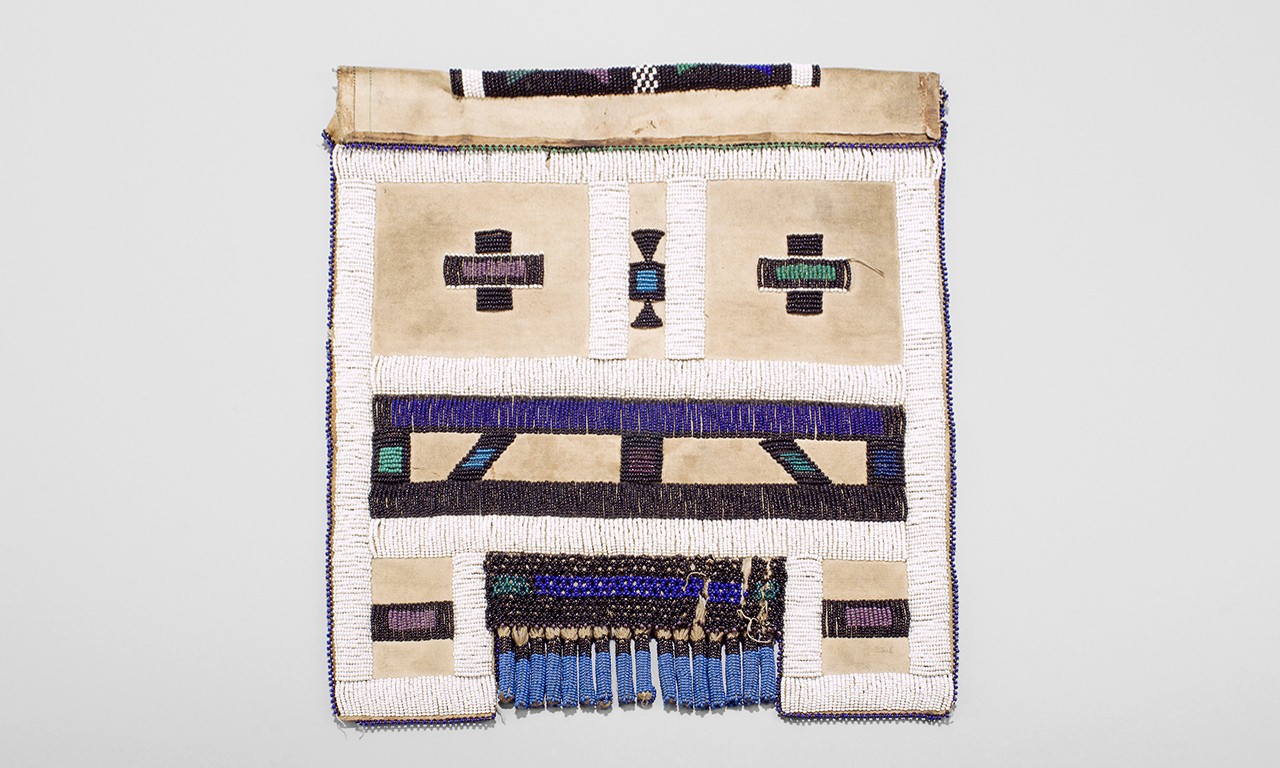 |
| Woman's Apron (Mapoto), early 20th Century Ndebele culture; South Africa Canvas and bead; 17 5/8 x 20 in. 99.76.112 Anonymous Gift |
All You Bead is Love
In South Africa but several regions north of where the Zulu and Xhosa cultures live, the women of the Ndebele culture wore beaded aprons that, like the necklaces of the Maasai, could be used to immediately determine what stage of life they were in. The mapoto seen here was given to a woman on her wedding day by her in-laws. The flaps hanging from opposite sides of the textile supposedly represented the two families that were coming together in matrimony, and the beaded tassels wishes for many children.
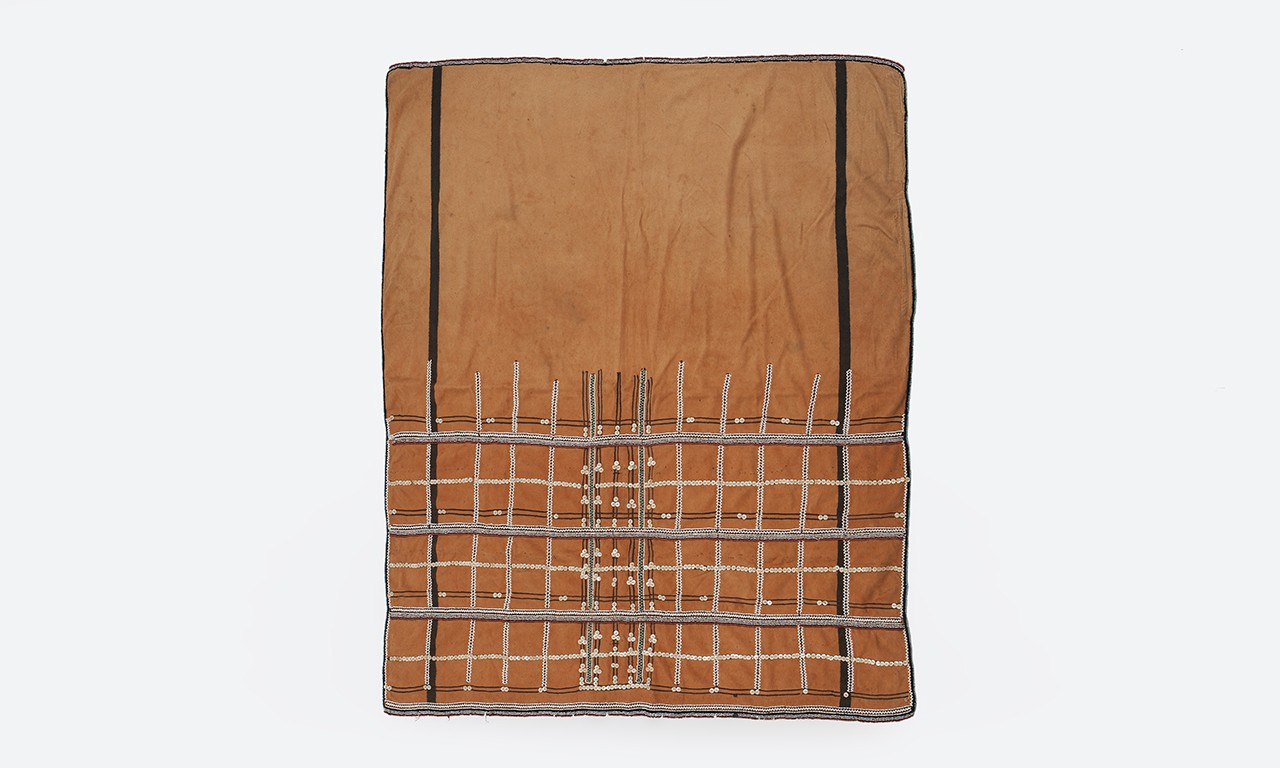 |
| Skirt (Isikhakha), early to mid 20th Century Xhosa or Mfengu culture; South Africa Cotton, glass, shell and pigment; 31 × 60 in. 2016.15.32 Anonymous Gift |
Skirting the Subject of Beadwork
Finally, we arrive at an example of beadwork from the Xhosa or the neighboring Mfengu with this long skirt called an isikhakha. These skirts are usually white or reddish and are only made by women due to their incorporation of glass beadwork. In Xhosa culture the way people dress indicates their social status, the size of their family, their region of origin, the ethnic group they belong to, and so on. Isikhakha are easy to make and wear, so they are still commonly worn today. More generally speaking, Xhosa beadwork can be identified by its coloring: the combination of white, blue, and pink is used on most conventional Xhosa necklaces and continues to be a pervasive combination in the art of Xhosa women today.
Text and images may be under copyright. Please contact Collection Department for permission to use. Information subject to change upon further research.

Comments